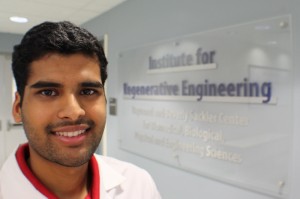In Vitro Evaluation of Calcium Peroxide Release from Composite Poly(lactic-co-glycolic acid) Microsphere Scaffolds
Fall 2013-Spring 2015
 Investigators: Ornella Tempo, Keshia Ashe, Yusuf Khan Ph.D, Cato Laurencin Ph.D/M.D UConn Health Center, Farmington CT
Investigators: Ornella Tempo, Keshia Ashe, Yusuf Khan Ph.D, Cato Laurencin Ph.D/M.D UConn Health Center, Farmington CT
Bone tissue engineering looks specifically at the intersection of cells, biomaterials, and bioactive factors for the restoration of normal bone function following instances of surgical, degenerative, or traumatic bone loss. The objective of this project was to investigate the potential of a materials-only based approach for guided bone regeneration. Specifically, the capabilities of composite poly(lactic-co-glycolic acid) (PLAGA) and calcium peroxide (CaO2) sintered microsphere scaffolds were investigated as an alternative to current bone repair strategies. During this project, composite sintered microspheres were fabricated, sintered into 3-dimensional (3D) matrices, and evaluated the in vitro release of CaO2. Continue reading


